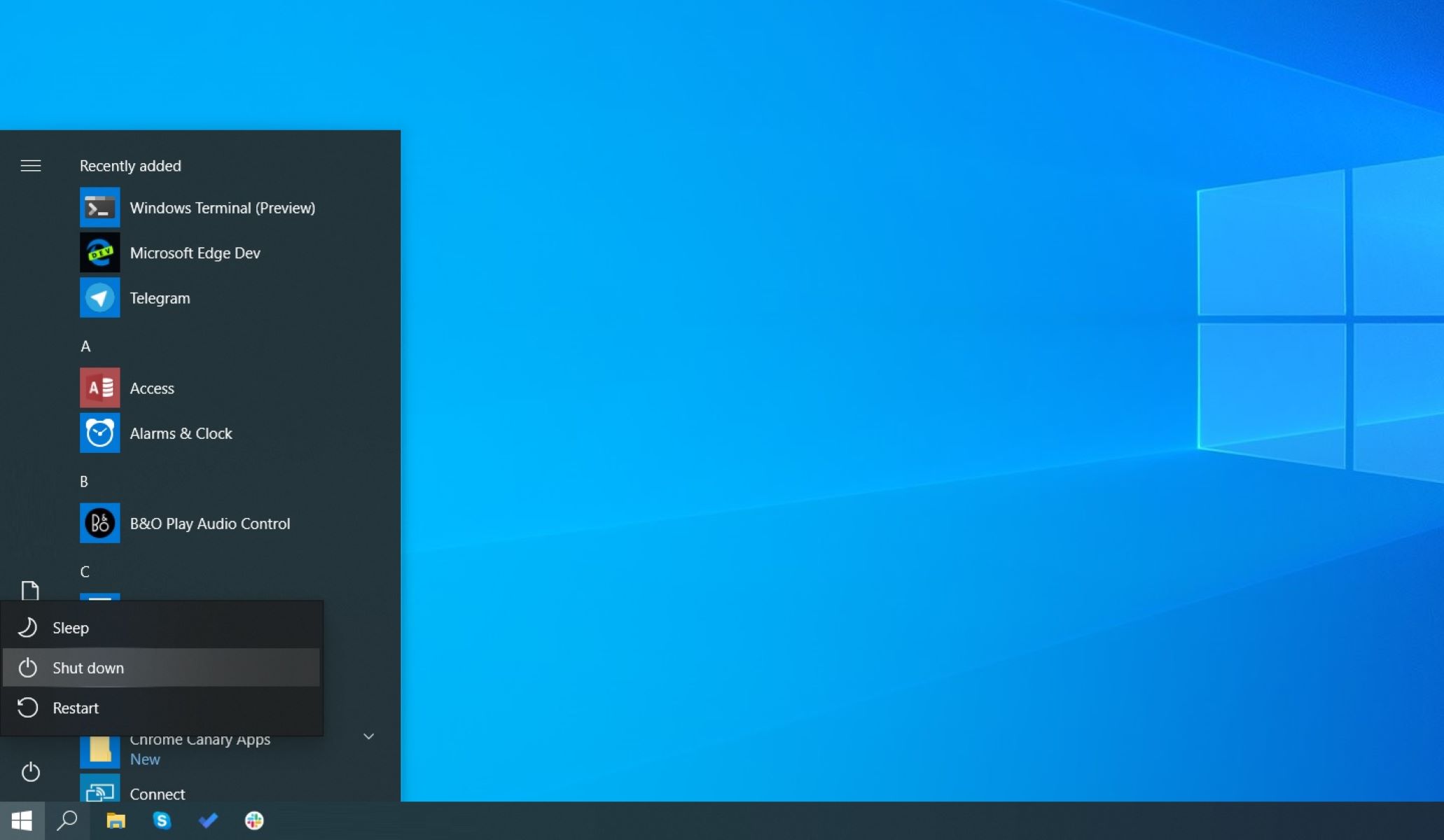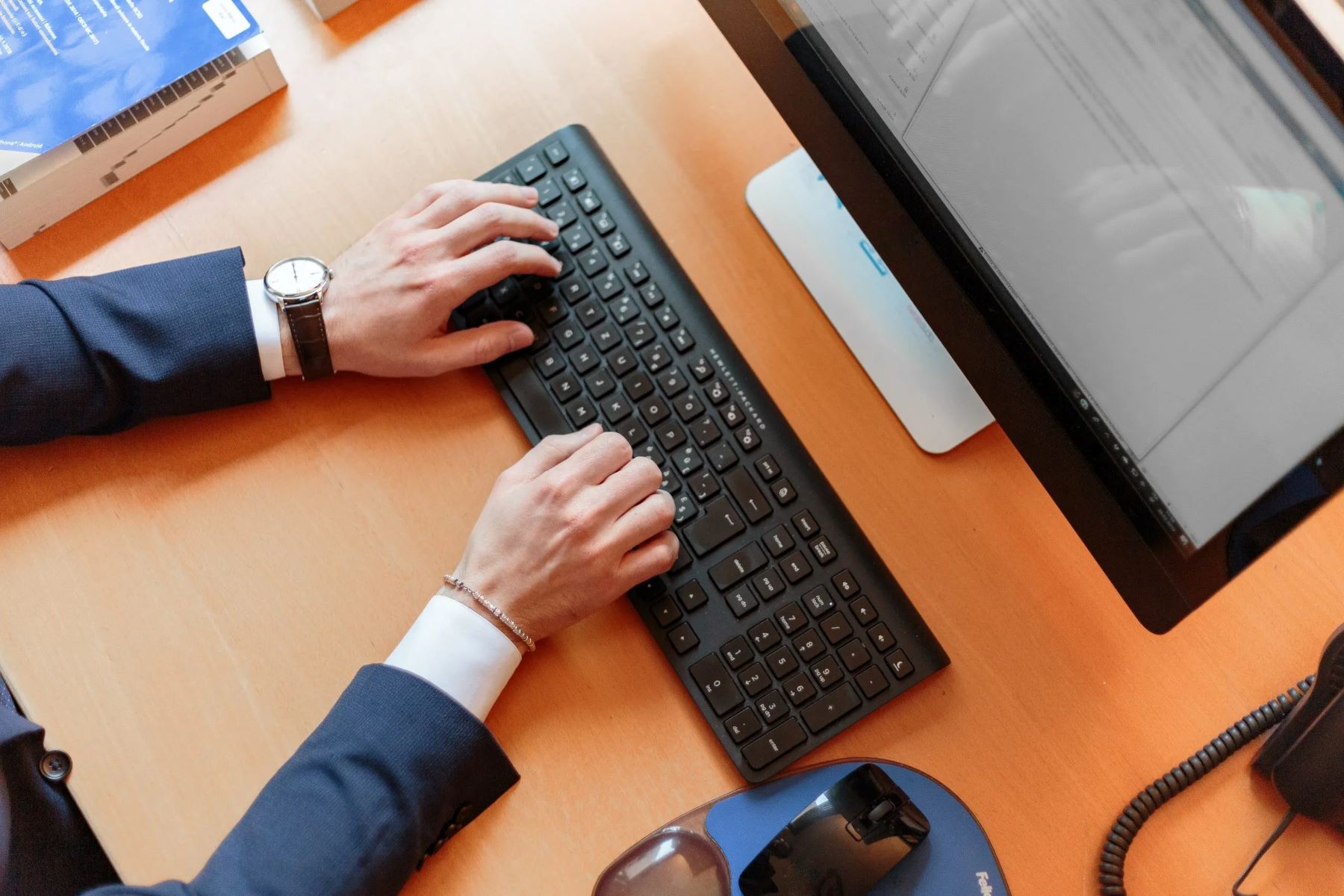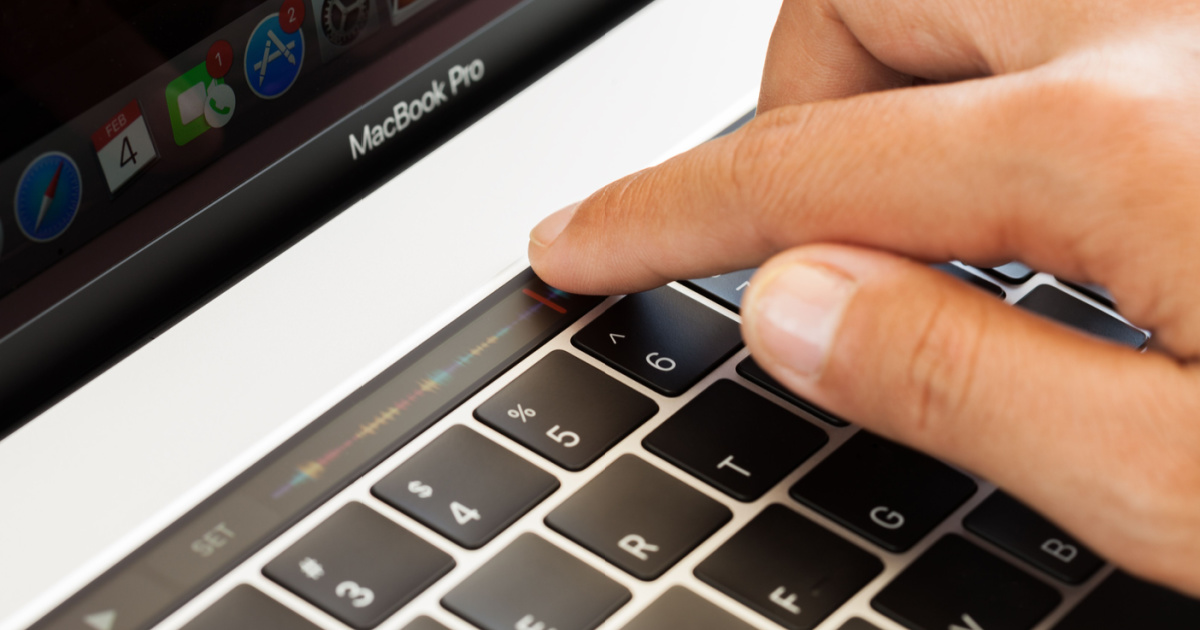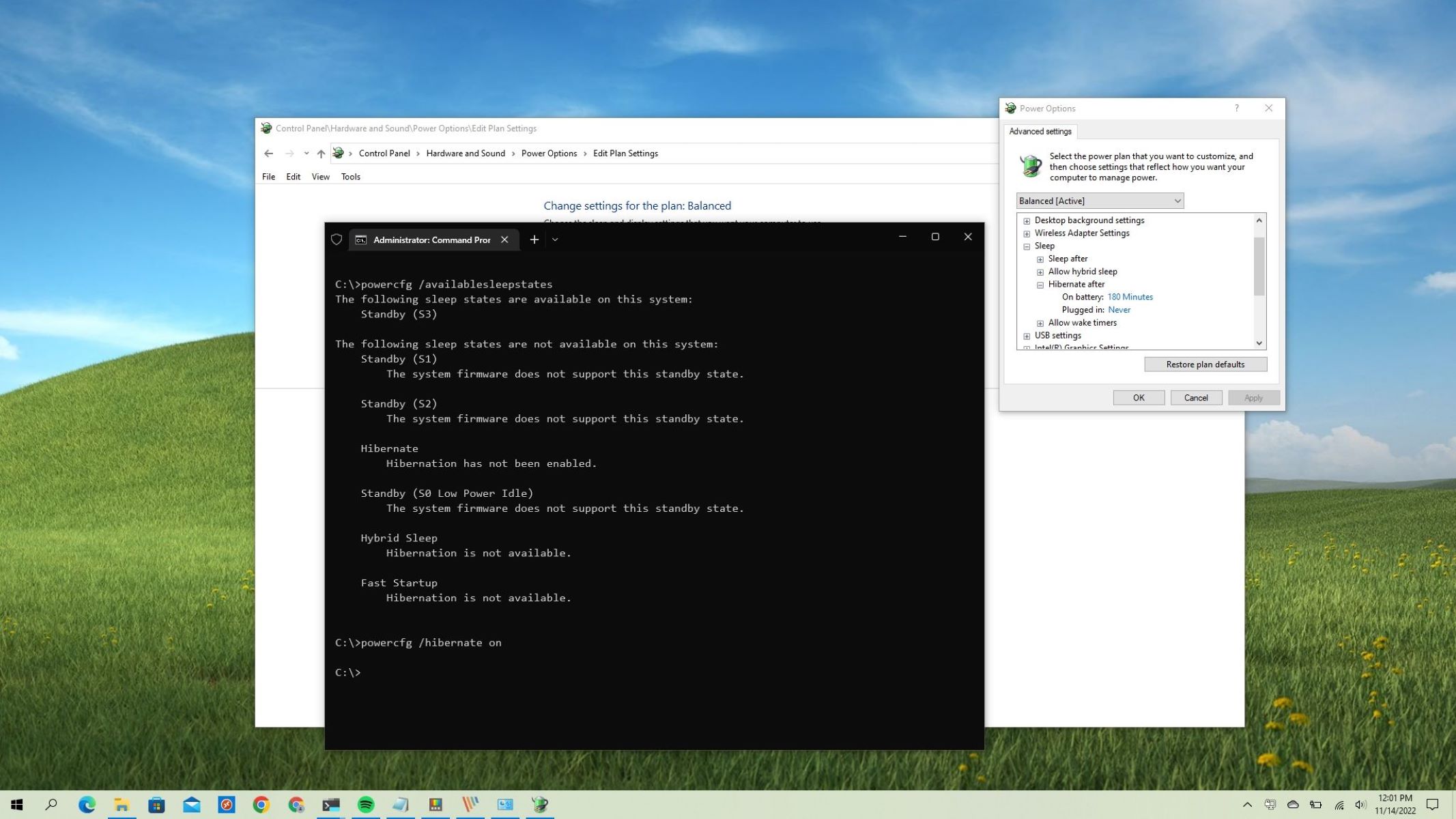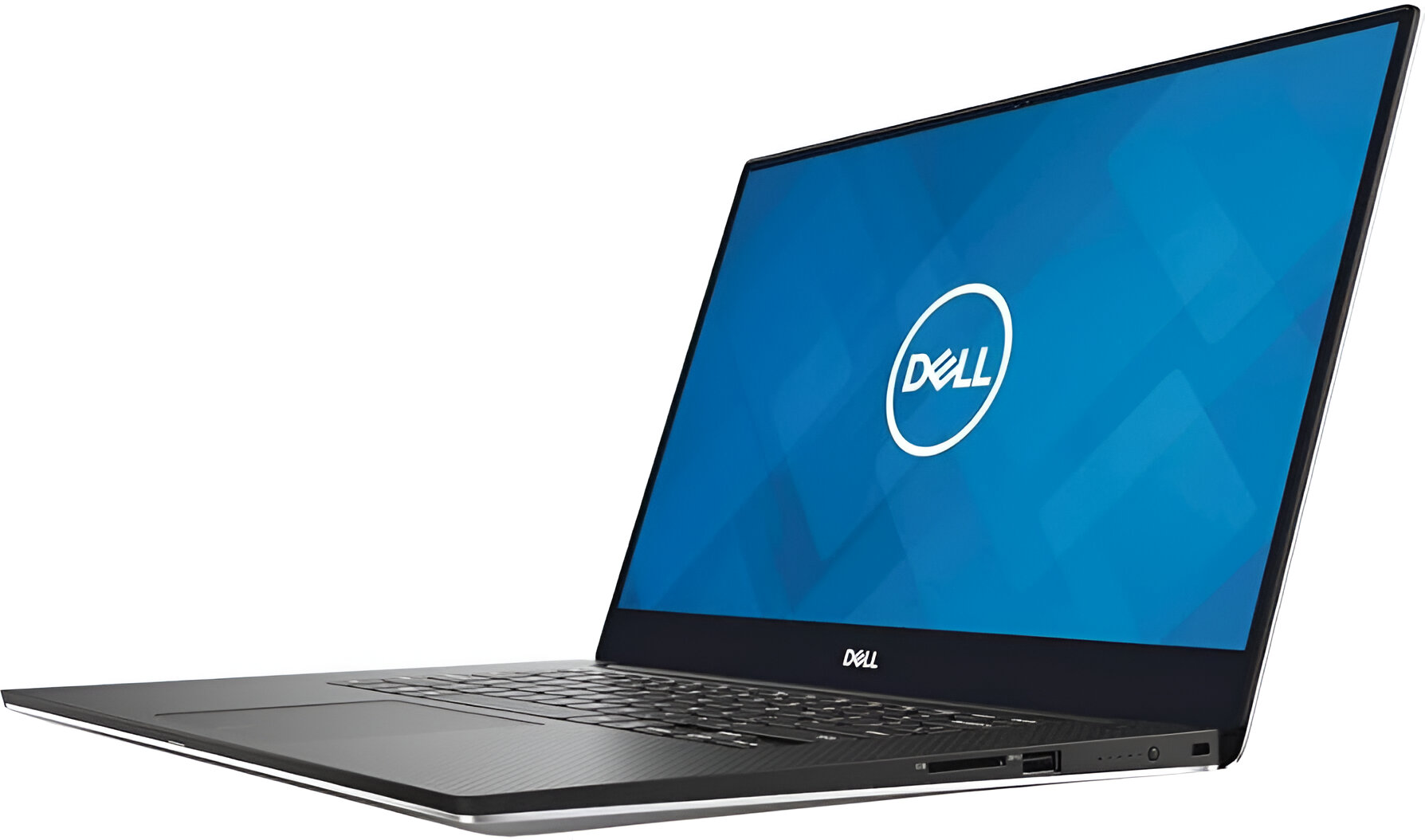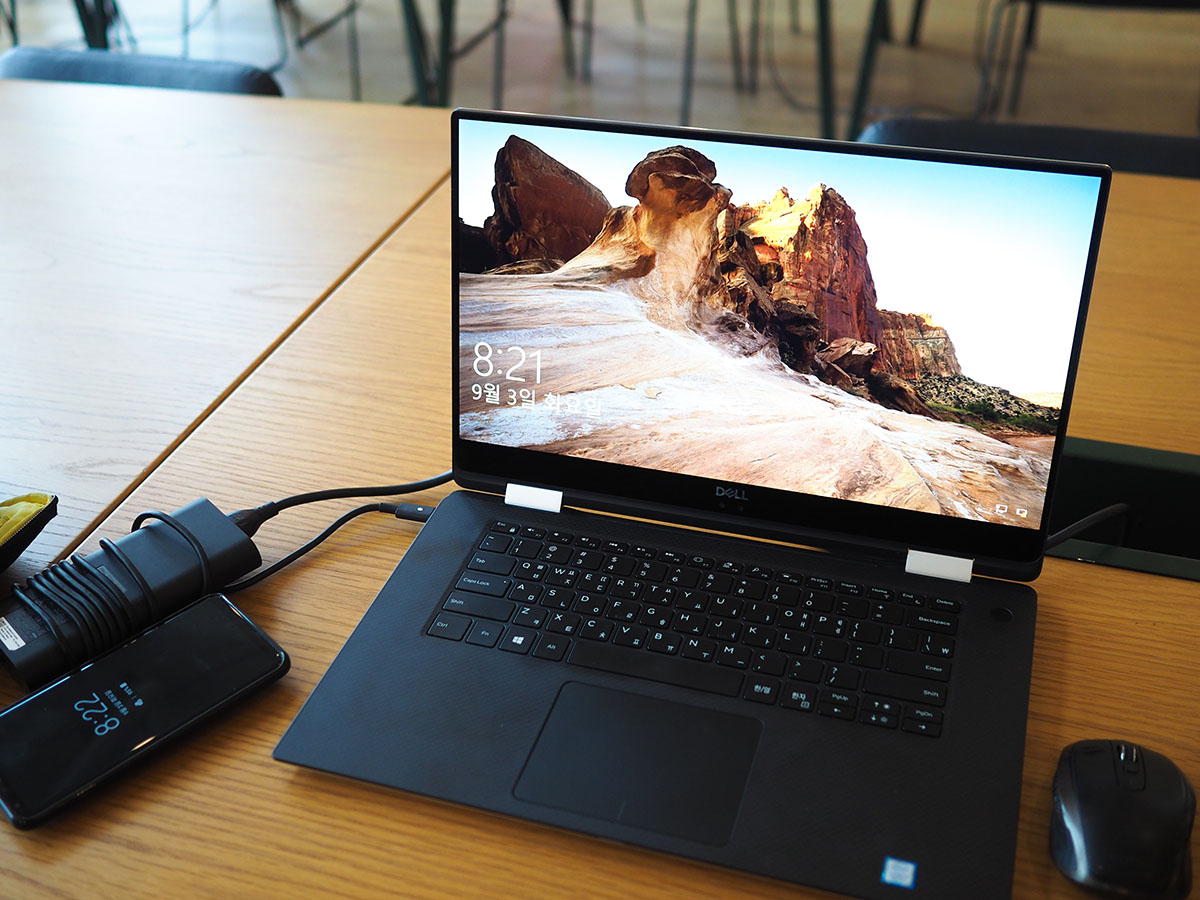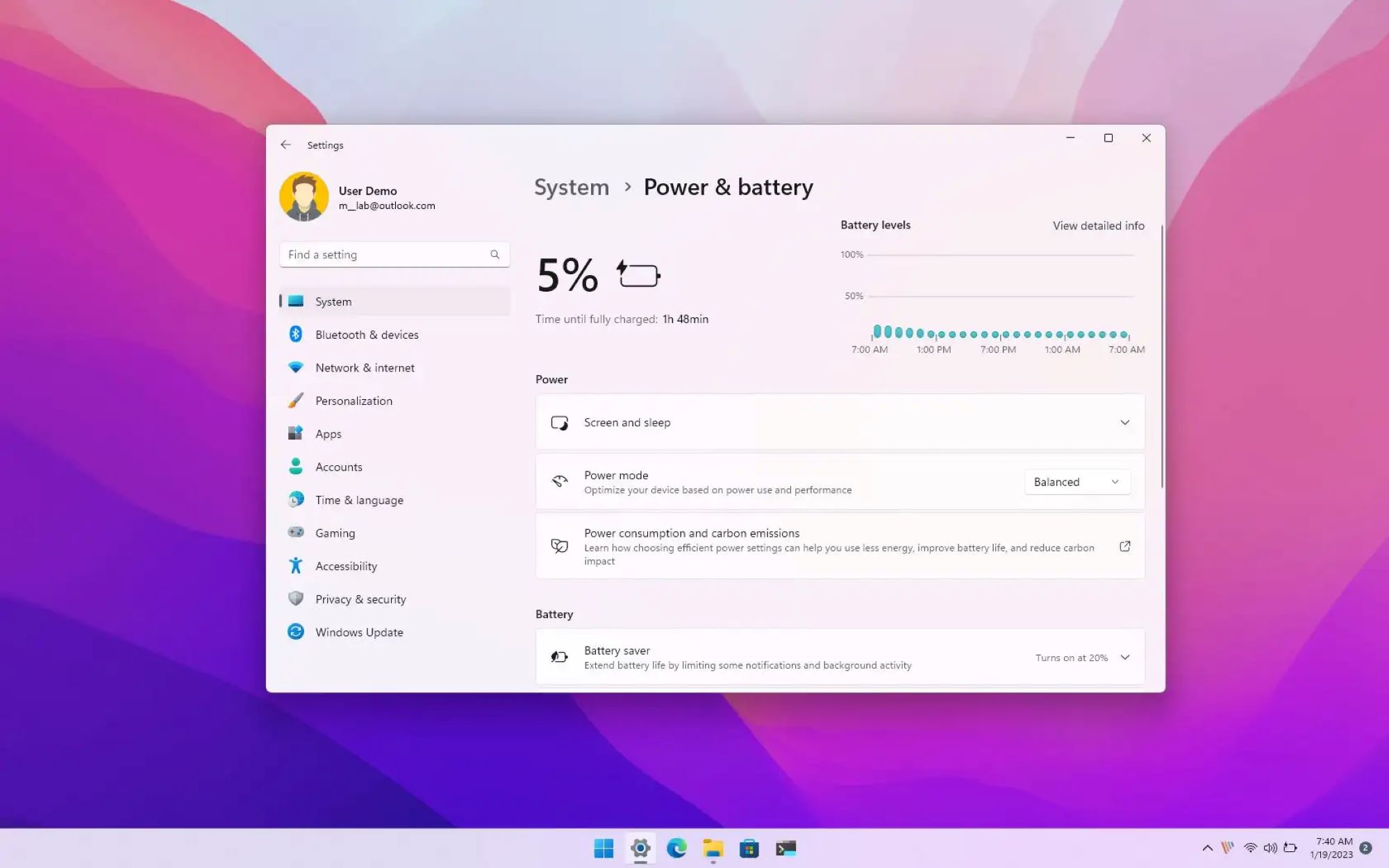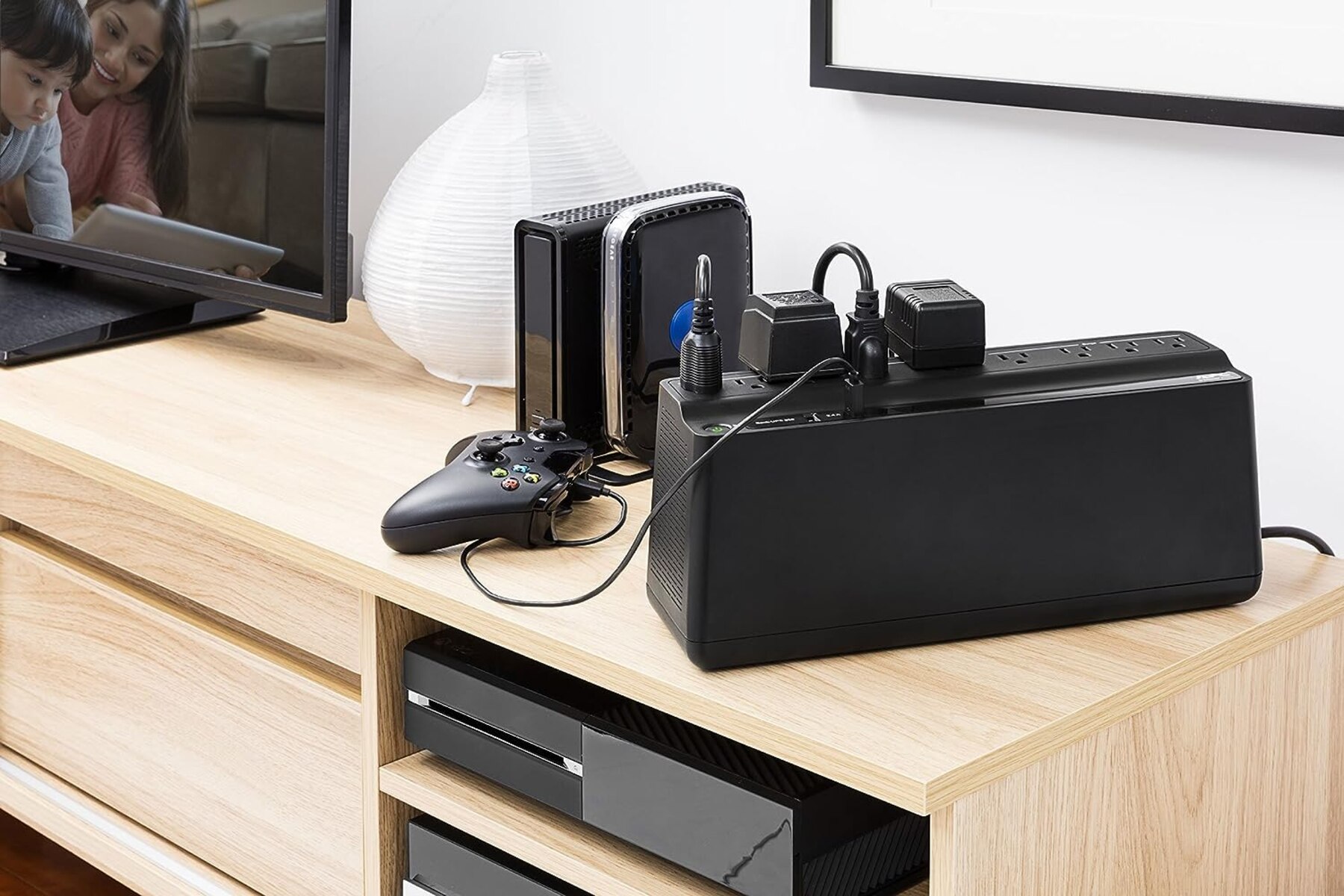Introduction
Shutting down your computer is a common task that is necessary to ensure proper maintenance and conserve power. Whether you’re an experienced user or a beginner, knowing the various methods to shut down your Windows 10 system can save you time and make the process more convenient. In this article, we will explore different ways to gracefully and efficiently shut down your Windows 10 computer.
Windows 10 provides several options to power off your system, ranging from the traditional Start menu to keyboard shortcuts and command prompt commands. Each method has its advantages and may be more suitable depending on your preferences and the specific circumstances. By familiarizing yourself with these methods, you can choose the most convenient and efficient way to shut down your computer.
Whether you’re looking for a quick method to shut down your system or prefer a more customized approach, we have you covered. From using the Start menu or the Power User menu to creating desktop shortcuts or using the command prompt, there is a method for everyone. Additionally, we’ll cover some lesser-known options like shutting down from the Ctrl + Alt + Del screen, the Run dialog box, the Alt + F4 keyboard shortcut, and the Lock screen.
Throughout this article, we’ll provide step-by-step instructions and tips to make the shutdown process as smooth as possible. We’ll also highlight any notable features or advantages of each method. So, let’s dive in and explore the various ways to shut down your Windows 10 system!
Method 1: Using the Start Menu
One of the simplest and most common methods to shut down your Windows 10 computer is by using the Start menu. Here’s how:
- Click on the “Start” button located at the bottom left corner of your screen.
- In the Start menu, click on the power button icon, which is represented by the power symbol.
- A drop-down menu will appear with options such as “Shut down,” “Restart,” and “Sleep.”
- Select “Shut down” to turn off your computer entirely.
Windows will then begin the shutdown process, closing all programs and saving your work if necessary. Once the shutdown is complete, your computer will power off.
This method is straightforward and accessible, making it ideal for users who prefer a graphical interface. Additionally, the Start menu provides other power-related options, such as restarting or putting your computer to sleep. This allows you to choose the action that best suits your needs.
If you frequently shut down your computer, you can also customize the Start menu to display the shutdown option directly, without the need for an additional click. This can be done by right-clicking on the Start button, selecting “Settings,” navigating to “Personalization,” clicking on “Start,” and enabling the “Power button” option.
The Start menu method is a convenient and user-friendly way to shut down your Windows 10 computer. However, if you prefer using keyboard shortcuts or need a faster method, the Power User menu may be more suitable.
Method 2: Using the Power User Menu
If you’re a fan of keyboard shortcuts and prefer a faster way to shut down your Windows 10 computer, the Power User menu is the method for you. Follow the steps below:
- Press the Windows key and the X key simultaneously to open the Power User menu.
- A menu will appear in the bottom left corner of your screen, featuring various options.
- Using your arrow keys, navigate to the “Shut down or sign out” submenu.
- Press the Enter key to expand the submenu.
- Select the “Shut down” option to turn off your computer.
The Power User menu provides quick access to essential system features, including the ability to shut down your computer with just a few keystrokes. This method is particularly useful for power users or those who prefer a keyboard-centric approach.
In addition to the shutdown option, the Power User menu offers other useful options like Restart, Sleep, and Hibernate. This menu is designed to streamline the process of accessing important features and functions without navigating through various menus.
By using the Power User menu, you can save time and perform common tasks efficiently. It eliminates the need to go through the traditional Start menu or search for specific options in deeper system settings.
If you’re looking for a faster method to shut down your Windows 10 computer and prefer using keyboard shortcuts, the Power User menu is an excellent choice. However, if you prefer a method that is more visual or accessible through a graphical interface, alternative methods such as the Start menu or the Ctrl + Alt + Del screen may be more suitable for you.
Method 3: Using the Ctrl + Alt + Del Screen
The Ctrl + Alt + Del screen is a powerful utility in Windows 10 that provides access to various system functions, including the ability to shut down your computer. Follow these steps to use the Ctrl + Alt + Del screen to initiate the shutdown process:
- Press the Ctrl + Alt + Del keys simultaneously on your keyboard.
- A screen will appear with several options, including Lock, Switch User, Sign out, Task Manager, and more.
- Click on the power button icon located at the bottom right corner of the screen.
- A menu will pop up with options to Sleep, Shut down, or Restart your computer.
- Select the “Shut down” option to power off your computer.
Using the Ctrl + Alt + Del screen provides an additional layer of security as it is often used to access the Task Manager or switch user accounts. By including the shutdown option in this screen, Windows ensures that shutting down your computer remains easily accessible when needed.
The Ctrl + Alt + Del screen is especially useful in situations where your computer becomes unresponsive or if you need to perform a forced shutdown. It allows you to bypass any frozen applications and initiate the shutdown process directly from a secure and reliable screen.
Remember that the Ctrl + Alt + Del screen provides various options, so make sure to select the “Shut down” option specifically to turn off your computer entirely. This method offers an alternative and convenient way to shut down your Windows 10 computer, particularly in situations where other methods may not be accessible or when you need a quick solution.
Method 4: Using the Command Prompt
If you’re comfortable using the command line interface, you can quickly shut down your Windows 10 computer using the Command Prompt. Follow these steps:
- Open the Command Prompt by pressing the Windows key + R to open the Run dialog box. Type “cmd” and press Enter, or search for “Command Prompt” in the Start menu and select it.
- In the Command Prompt window, type the following command:
shutdown /s - Press Enter to execute the command.
After running the command, Windows will initiate the shutdown process and power off your computer. This method allows you to shut down your system quickly and efficiently without using any graphical interfaces.
The Command Prompt offers additional options to customize the shutdown process. For example, you can specify a time delay before the shutdown occurs by including the /t flag followed by the number of seconds. This can be useful if you want to schedule a shutdown in the future.
For more advanced users, the Command Prompt provides other options such as /f to force close any running applications or /r to restart the computer instead of shutting down. You can explore these additional parameters by typing shutdown /? in the Command Prompt.
Note that using the Command Prompt requires some familiarity with the command line interface. If you’re new to the Command Prompt, it may take some time to get accustomed to the syntax and available commands. Ensure that you type commands accurately to avoid unintended consequences.
Method 5: Creating a Desktop Shortcut
If you prefer a more visual approach and want a quick way to shut down your Windows 10 computer, you can create a desktop shortcut specifically for this purpose. Here’s how:
- Right-click on an empty area of your desktop to open the context menu.
- Navigate to “New” and select “Shortcut.”
- In the “Create Shortcut” window, type the following command in the “Location” field:
shutdown.exe /s /t 0 - Click “Next” to proceed.
- Provide a name for the shortcut, such as “Shut Down” or “Power Off.”
- Click “Finish” to create the shortcut.
Once the shortcut is created, you can double-click on it to immediately initiate the shutdown process. Windows will close all programs and perform a clean shutdown of your computer.
Creating a desktop shortcut provides the advantage of having a visual and easily accessible method to shut down your Windows 10 computer. You can place the shortcut on your desktop for quick and convenient access. Additionally, you can customize the shortcut’s appearance by changing its icon to make it stand out.
If you prefer using keyboard shortcuts, you can assign a global hotkey to the desktop shortcut for even faster access. To do this, right-click on the shortcut, select “Properties,” and navigate to the “Shortcut” tab. Click on the “Shortcut key” field and press the key combination you want to assign. This way, you can power off your computer with a simple keystroke combination, regardless of which window is currently active.
Creating a desktop shortcut is a great option for users who want a visual and easily accessible way to shut down their Windows 10 computer. It provides a convenient method to initiate the shutdown process with just a click or a couple of keystrokes.
Method 6: Using the Run Dialog Box
The Run dialog box is a powerful tool in Windows 10 that allows you to quickly access various system functions, including the ability to shut down your computer. Follow these steps to use the Run dialog box to initiate the shutdown process:
- Press the Windows key + R on your keyboard to open the Run dialog box.
- In the Run dialog box, type “shutdown /s” without the quotes.
- Press Enter or click on the “OK” button.
After executing the command, Windows will begin the shutdown process and power off your computer. Using the Run dialog box provides a convenient and efficient way to shut down your system without navigating through multiple menus or using the command prompt.
Additionally, the Run dialog box offers some customization options to enhance your shutdown experience. For example, you can specify a time delay before the shutdown occurs by appending the command with “/t” followed by the number of seconds. This can be useful if you want to schedule a shutdown in the future.
Moreover, you can access the Run dialog box quickly by pressing the Windows key + R anytime, making it a convenient method for experienced users who prefer a keyboard-centric approach. The Run dialog box also supports auto-complete, allowing you to type just a few characters of the command to quickly populate the complete command.
Using the Run dialog box to shut down your Windows 10 computer is a versatile and efficient method that combines the ease of a graphical interface with the speed of using commands. It is especially useful for users who are comfortable working with keyboard shortcuts and want a quick way to initiate a system shutdown.
Method 7: Using the Alt + F4 Keyboard Shortcut
If you’re looking for a quick and universal way to shut down your Windows 10 computer, the Alt + F4 keyboard shortcut is a convenient option. Follow these steps to use Alt + F4 to initiate the shutdown process:
- Ensure that there are no windows or programs currently active on your computer.
- Click on the desktop background or an empty area of the taskbar to ensure the focus is on the desktop.
- Press the Alt + F4 keys simultaneously on your keyboard.
- A “Shut Down Windows” dialog box will appear with options to Shut down, Restart, or put your computer to Sleep.
- Select “Shut down” from the drop-down menu and click the “OK” button.
The Alt + F4 keyboard shortcut provides a quick and efficient way to shut down your Windows 10 computer without the need to navigate through menus or use external tools. It can be used from any active window or the desktop itself, making it a versatile method that works regardless of the application you’re currently using.
It’s important to note that the Alt + F4 keyboard shortcut can also be used to close individual windows or applications. However, when used on the desktop, it invokes the shut down options instead.
By utilizing the Alt + F4 keyboard shortcut, you can save time and simplify the shutdown process. It is a handy method for users who prefer using keyboard shortcuts and want a quick and universal way to shut down their Windows 10 computer.
Method 8: Using the Sign Out Option
While the primary purpose of the Sign Out option in Windows 10 is to switch user accounts or sign out of your current session, it can also be used as a method to indirectly shut down your computer. Here’s how:
- Click on the “Start” button located at the bottom left corner of your screen.
- In the Start menu, click on your user profile picture or the username displayed.
- A flyout menu will appear with several options, including “Sign out.”
- Select “Sign out.”
After signing out, Windows will close all active programs and return to the login screen, effectively shutting down your computer. This method is useful when you prefer to sign out of your user account while also powering off your system.
It’s important to note that using the Sign Out option will close all your open programs and unsaved work, so make sure you save any important files before proceeding with this method.
Additionally, the Sign Out option is particularly useful if you have multiple user accounts on your computer. By signing out of your account, you allow other users to log in to their respective accounts without having to restart the entire system.
While this method doesn’t directly initiate a shut down, it provides a practical way to achieve a similar result by signing out of your user account, closing all programs, and effectively shutting down your Windows 10 computer.
Method 9: Using the Lock Screen
Although the primary purpose of the Lock Screen in Windows 10 is to secure your computer when you step away, it can also be used as a method to indirectly shut down your system. Here’s how:
- Press the Windows key + L on your keyboard simultaneously.
- The Lock Screen will appear, displaying the lock screen background and the time.
- In the bottom right corner of the screen, click on the power button icon.
- A menu will appear with options to Sleep, Shut down, or Restart your computer.
- Select the “Shut down” option to initiate the shutdown process.
By using the Lock Screen to shut down your Windows 10 computer, you can quickly and conveniently power off your system while ensuring that it remains secure. This method is especially useful when you need to step away from your computer but want to shut it down without having to log back in.
When you use the Lock Screen method, Windows will initiate the shutdown process and close all programs, ensuring that your work is saved and your system is properly shut down. It is important to note that any unsaved data or open files may be lost, so make sure to save your work before proceeding with the shutdown.
The Lock Screen method is not only a practical way to shut down your computer, but it also adds an extra layer of security by requiring a password or other authentication method to access your account again. It helps protect your data and privacy while providing a convenient way to power off your Windows 10 computer.
Conclusion
Shutting down your Windows 10 computer is a routine task that is necessary for maintenance and conserving power. In this article, we explored nine different methods to shut down your system, each with its own advantages and convenience.
Starting with the familiar and user-friendly Start menu, you can easily access the shutdown option with just a few clicks. If you prefer a faster approach, the Power User menu or the Alt + F4 keyboard shortcut provide quick access to the shutdown functionality. For more advanced users, the Command Prompt offers a command-line approach, allowing for customization and scheduling of shutdowns.
If visual elements and shortcuts are more your style, you can create a desktop shortcut specifically for shutting down your computer, or utilize the Run dialog box for a seamless experience. Additionally, using the Ctrl + Alt + Del screen and the Sign Out option both provide alternative ways to initiate the shutdown process.
Lastly, the Lock Screen serves a dual purpose of securing your computer and indirectly allowing you to shut it down when needed.
By familiarizing yourself with these methods, you can choose the most convenient and efficient way to shut down your Windows 10 computer based on your preferences and circumstances. Whether you prefer graphical interfaces, keyboard shortcuts, or command-line operations, there is a method suitable for everyone.
Remember to save your work before initiating a shutdown, as closing the running programs will result in the loss of unsaved data. Prioritizing the safety and security of your computer, choose a method that fits your needs and ensures a smooth and proper shutdown process.
Now that you have a range of methods at your disposal, shutting down your Windows 10 computer will be a breeze. Enjoy the convenience and ease of shutting down your system using the method that works best for you!







